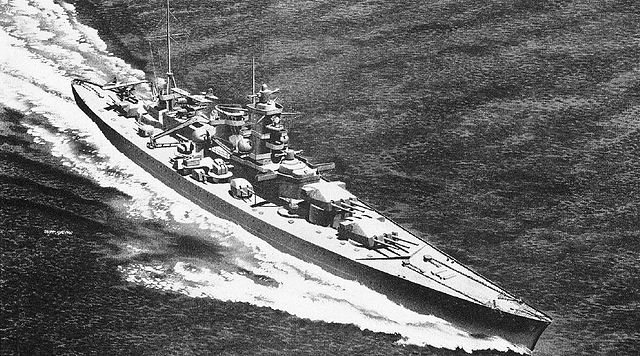Top Qs
Timeline
Chat
Perspective
Operation Regenbogen (Arctic)
1942 German naval sortie in the Arctic Ocean From Wikipedia, the free encyclopedia
Remove ads
Operation Rainbow (Unternehmen Regenbogen) was a 1942 sortie into the Arctic Ocean by warships of the Nazi German Kriegsmarine (German Navy) during the Second World War. The operation culminated in the Battle of the Barents Sea.
This article needs additional citations for verification. (May 2022) |
Remove ads
Background
Following the disastrous Convoy PQ 17 and the hard-fought Convoy PQ 18 battles in the summer and autumn of 1942 and the needs of Operation Torch in the Mediterranean, Allied convoys to the Soviet Union had been temporarily suspended. In December 1942 Arctic convoys resumed with a new JW/RA convoy series. The Kriegsmarine had concentrated a large force of surface vessels and U-boats, supported by the aircraft of Luftflotte 5 (Air Fleet 5) of the Luftwaffe.
Remove ads
German plan

Bjørnøya (Bear Island) circled in red
Regenbogen was based on a plan to intercept the next Allied convoy to Murmansk. A patrol line of four U-boats was established off Bear Island and a surface force consisting of the cruisers Admiral Hipper and Lützow with six destroyers was assembled at Altafjord. When a convoy was spotted, the fleet would sail as two battle groups; one to engage the expected cruiser escort and the other to attack the convoy. The German force was handicapped by strict orders from Adolf Hitler not to take excessive risks with the capital ships, which led to a general loss of initiative. Regenbogen was also hampered by the intention to send Lützow into the Atlantic following the action, which meant that the ship should avoid damage.[1]
Remove ads
Action
On 22 December 1942 Convoy JW 51B sailed for Murmansk and was detected by U-354 on 30 December. The German flotilla sailed from Altafjord the same day. In the Battle of the Barents Sea, Regenbogen had some success; Hipper was able to draw off the escort as planned, allowing Lützow to close with the convoy. Excessive caution by the captain of Lutzow caused him to break off the attack having caused little damage.
Aftermath
The failure of the operation can be attributed to the spirited defence made by the convoy escort and the restrictive and contradictory orders given by Hitler to the force commander. Hitler was furious when he heard about the dismal performance of the Navy. He subjected Grand Admiral Erich Raeder, the head of the Kriegsmarine, to a 90-minute tirade, in which he berated the uselessness of the German surface fleet and announced a decision to scrap all its ships and use its guns and men as shore defences. Raeder felt unable to continue without the confidence of his leader and offered his resignation, which was accepted. Raeder was replaced by Admiral Karl Dönitz, the commander of the U-boat fleet.[2]
Remove ads
German order of battle
Remove ads
Footnotes
References
Further reading
Wikiwand - on
Seamless Wikipedia browsing. On steroids.
Remove ads

